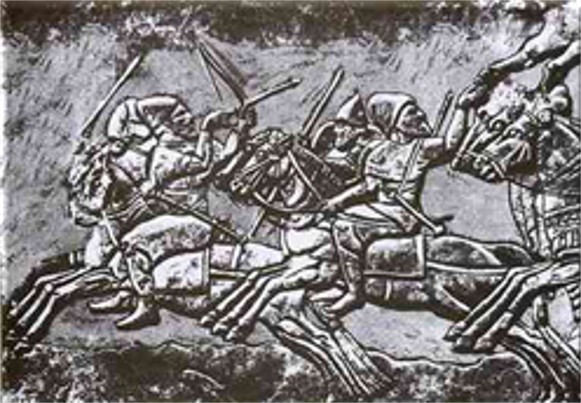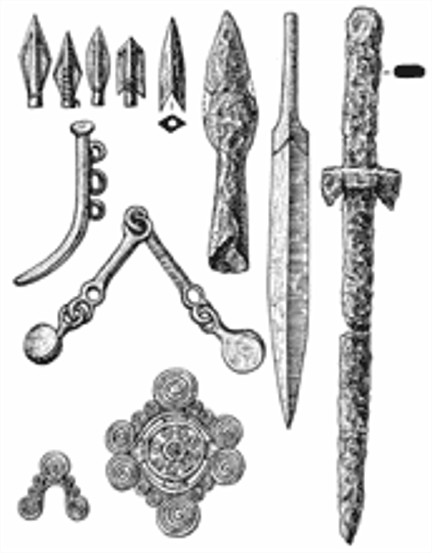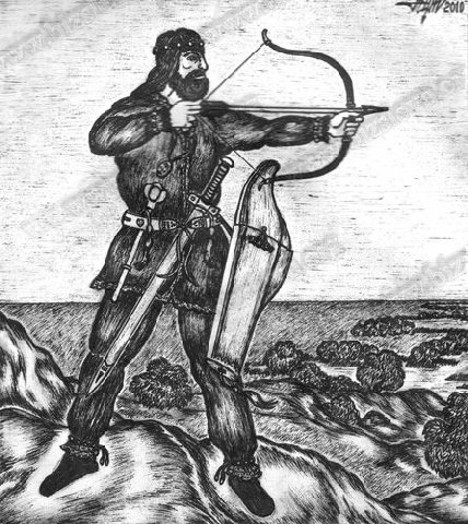Cimmerians
Cimmerians [Ukrainian: кімерійці; kimeriitsi; Greek: Κιμμέριοι, Kimmerioi]. Oldest settlers of southern Ukraine, mentioned by Homer (ca 8th century BC) and by Herodotus in his History (5th century BC). Their origin is unknown, but the majority scholars consider them to be Indo-Europeans. In linguistic terms, on the evidence of the recorded names of their leaders—Tygdamme (in Herodotus, Lygdamis) and his son Sandakhsatra—they are considered Iranians (see Iranian peoples). According to Herodotus, the Cimmerians were driven from the steppes by the Scythians in the 7th century BC: some of them settled on the southern shore of the Black Sea (in the Crimea they were known as Taurians), while others waged a campaign in Asia Minor, taking Sardis, the capital of Lydia, in 652 BC. This marked the Cimmerians' apex of power: subsequently they declined and became extinct. Although their culture has been little studied as yet, some scholars believe that the numerous settlements and burial mounds in southern Ukraine dating from the late second and early first milleniums BC are archeological remains of the Cimmerian age (see Timber-Grave culture).
BIBLIOGRAPHY
Terenozhkin, A. Kimmeriitsy (Kyiv 1976)
[This article originally appeared in the Encyclopedia of Ukraine, vol. 1 (1984).]



.jpg)
